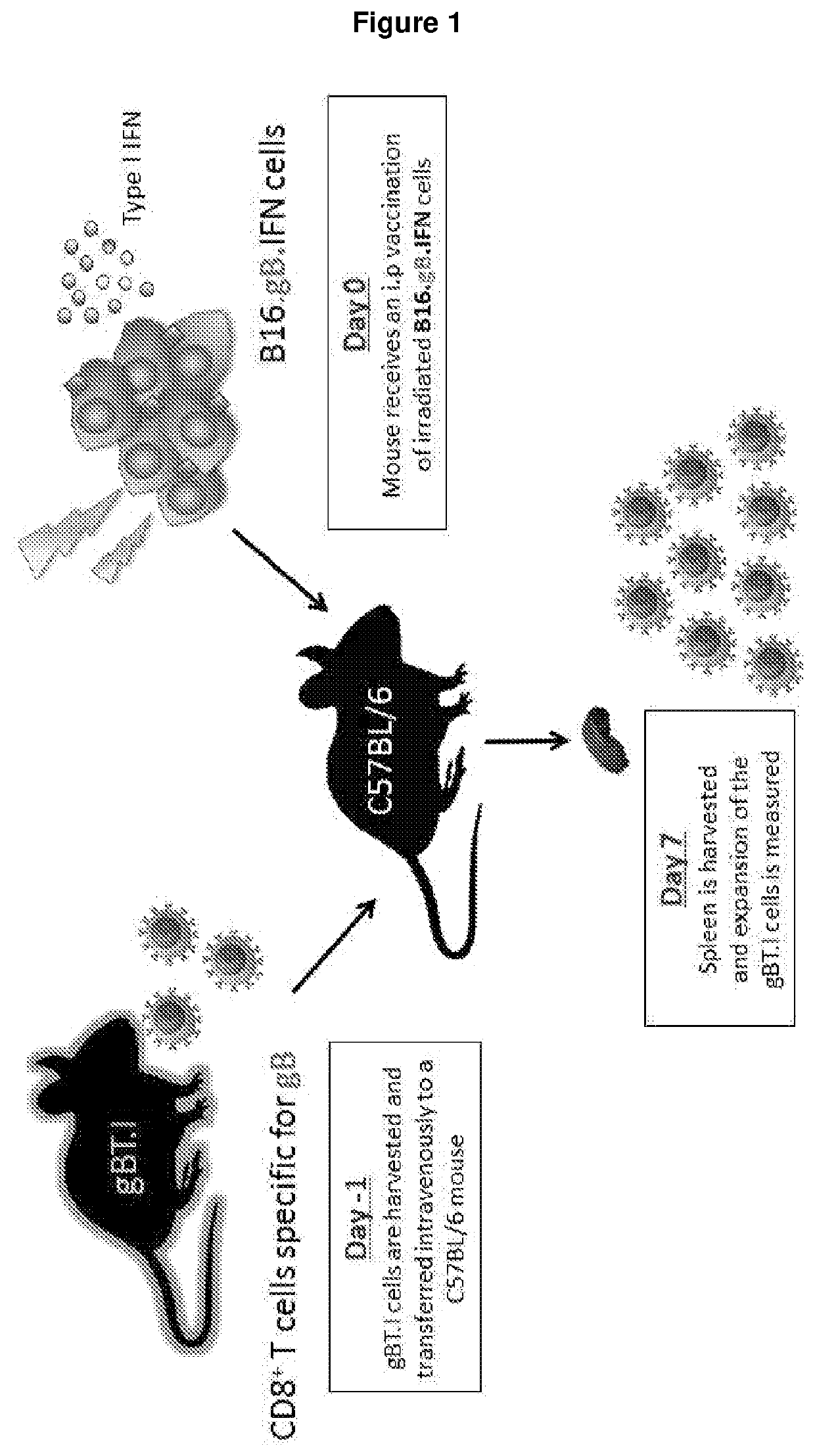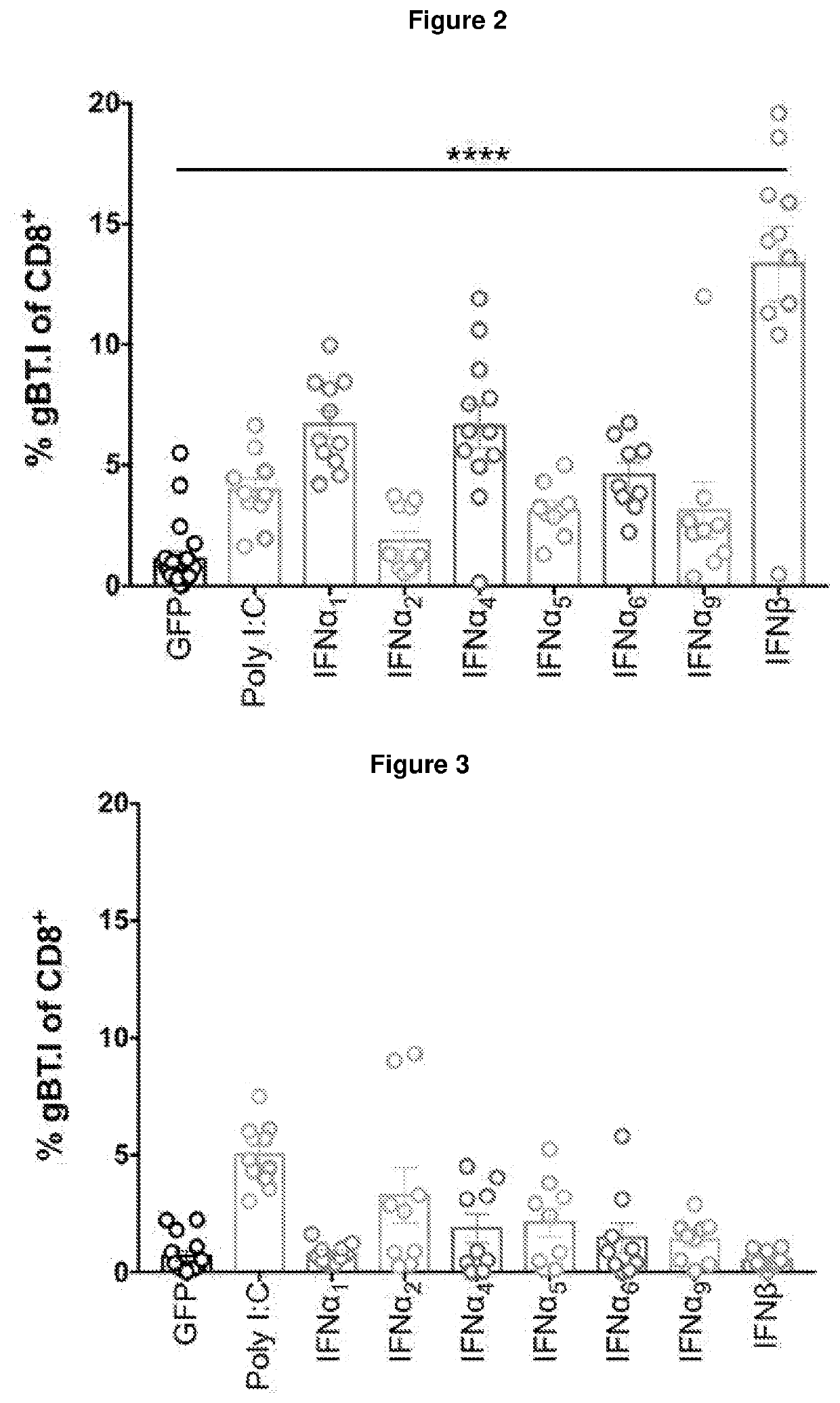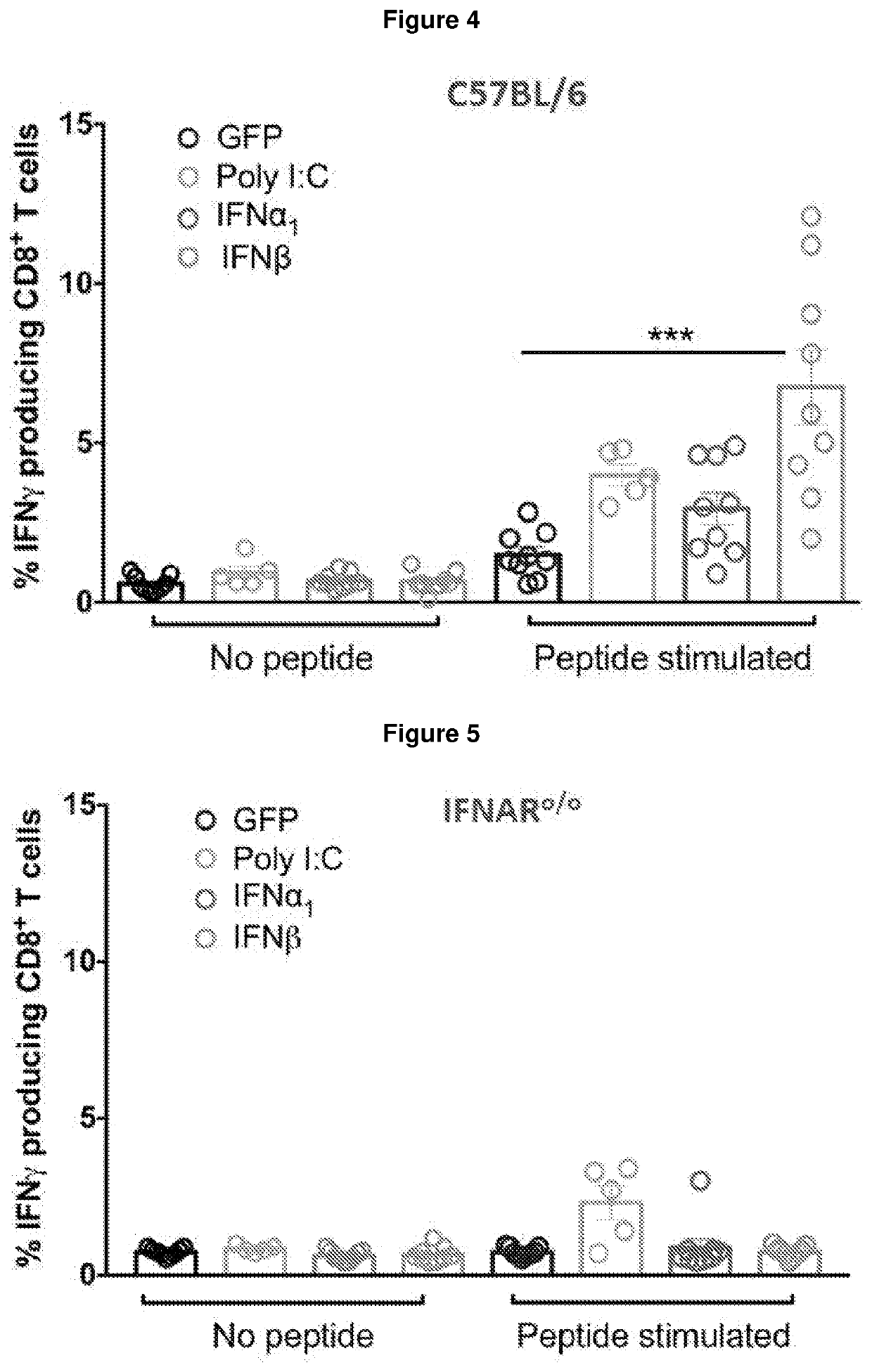Immunogenic compositions
- Summary
- Abstract
- Description
- Claims
- Application Information
AI Technical Summary
Benefits of technology
Problems solved by technology
Method used
Image
Examples
example 1
Identification of Novel Adjuvants Which Enhance CD8+ T Cell Expansion
[0256]A series of experiments using preclinical models were conducted to test the adjuvant activities of seven members of the type I interferon family in the context of anti-tumour vaccination for melanoma. These models involved the adoptive transfer of a low precursor frequency (5×104) of gBT.I.CD45.1+ CD8+ T cells intravenously into mice at least one day prior to intraperitoneal immunisation with 2.5×106 transduced irradiated B16.gB.GFP cells (±poly I:C or IFNα / β). Seven days post vaccination, the spleen was harvested and the expansion of gBT.I.CD45.1 CD8+ T cells was measured (FIG. 1).
[0257]gBT.I: The CD8+ T cells in this TCR transgenic animal express a H-2Kb-restricted T cell receptor specific for herpes simplex virus glyocoprotein B (gB). (Mueller SN, Immunol Cell Biology, 2002).
[0258]Three of the interferon subtypes induced greater tumour-specific CD8+ T cell expansion than the standard poly I:C adjuvant; thi...
example 2
Prophylactic Vaccination in Conjunction with Agonism of Interferon Beta Receptor
[0260]The efficacy of prophylactic vaccination with IFN-β was further assessed using a subcutaneous B16 melanoma model engineered to express gB from herpes simplex virus. At Day 0, mice receive an i.p. vaccination with 2.5×105 irradiated B16.gB cells expressing GFP±IFNα1 / β. At Day 7, C57BL / 6 mice received subcutaneous inoculation of 5×105 B16.gB cells and tumour-free survival is measured (FIG. 7).
[0261]The results demonstrate vaccination with IFN-β results in increased incidence of tumour-free survival, whereas all mice developed large tumours post vaccination in the absence of an interferon subtype, and a reduced proportion of mice vaccinated with IFNα1 remained tumour-free (FIG. 8). No protection was observed in IFNARo / o mice receiving vaccination±IFNα1 / β (FIG. 9), demonstrating host IFNα / β signalling is required for the observed protection in C57BL / 6 mice. Furthermore, no protection was observed in I / ...
example 3
Therapeutic Vaccination in Conjunction with Agonism of Interferon Beta Receptor
[0262]The efficacy of therapeutic vaccination with IFN-β was next assessed using a cutaneous B16 melanoma model (Wylie B, Oncoimmunology, 2015) engineered to express gB from herpes simplex virus. At Day 0, C57BL / 6 mice received an epicutaneous graft of 105 B16.gB cells. Four days after tumour engraftment, mice were immunised i.p. with either saline or 2×105 irradiated B16.gB cells in the absence (GFP) or presence of IFN-β and tumour incidence measured (FIG. 11).
[0263]In saline treated or B16-gB vaccinated mice, 40% and 45% of mice respectively developed tumours 60 days after treatment (FIG. 12A), whereas 0% of mice vaccinated with B16-gB cells expressing IFNβ developed tumours (FIG. 12A). Mice surviving 60 days post treatment were re-challenged subcutaneously with B16.gB cells (105) to assess whether memory cells can provide protection. In B16.gB.GFP or B16.gB.GFP+IFNβ vaccinated mice, 67% and 90% of mice...
PUM
| Property | Measurement | Unit |
|---|---|---|
| Composition | aaaaa | aaaaa |
| Immunogenicity | aaaaa | aaaaa |
| Cytotoxicity | aaaaa | aaaaa |
Abstract
Description
Claims
Application Information
 Login to View More
Login to View More - R&D
- Intellectual Property
- Life Sciences
- Materials
- Tech Scout
- Unparalleled Data Quality
- Higher Quality Content
- 60% Fewer Hallucinations
Browse by: Latest US Patents, China's latest patents, Technical Efficacy Thesaurus, Application Domain, Technology Topic, Popular Technical Reports.
© 2025 PatSnap. All rights reserved.Legal|Privacy policy|Modern Slavery Act Transparency Statement|Sitemap|About US| Contact US: help@patsnap.com



